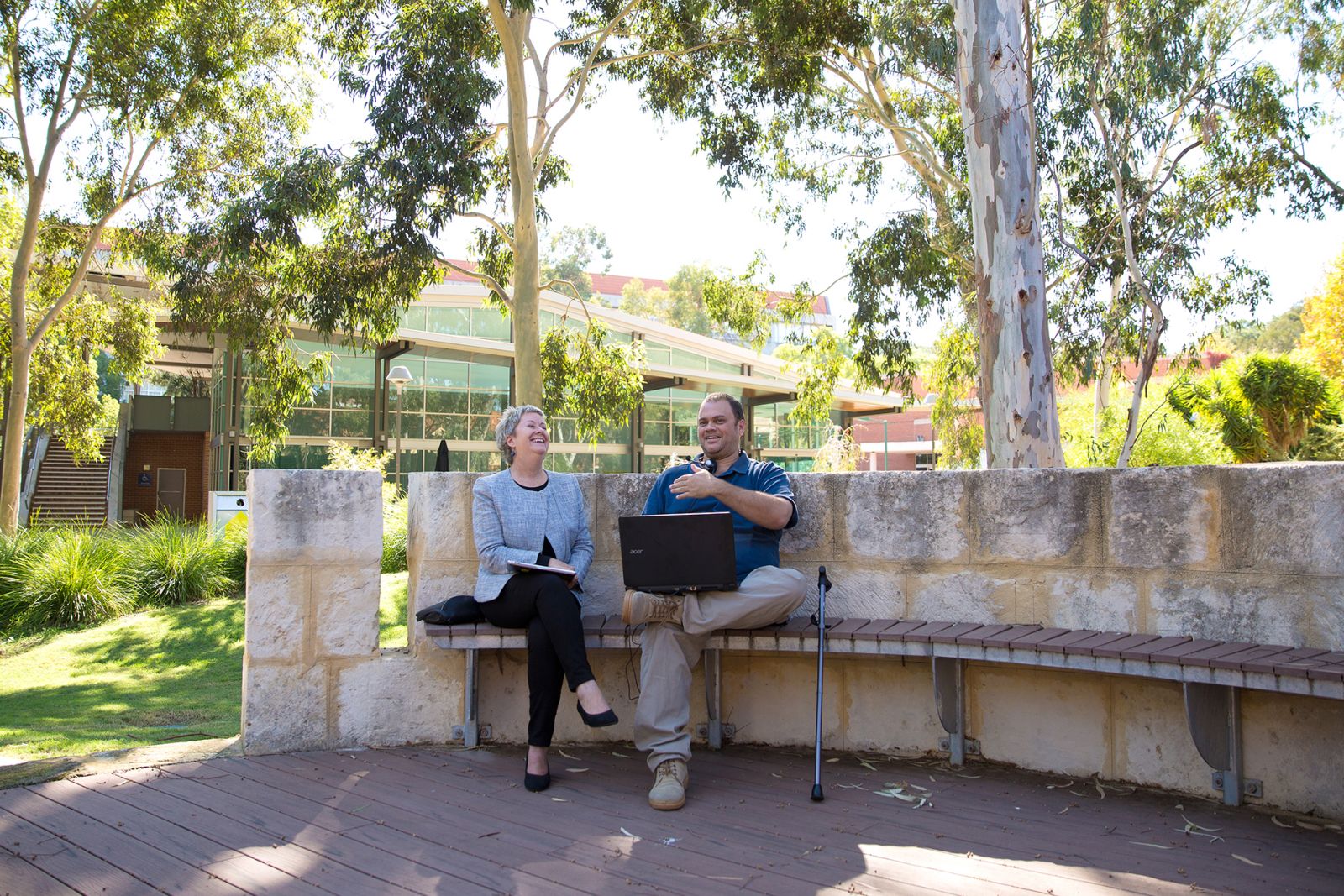Employer partnership: Curtin University
Photo: A woman in a wheelchair at Curtin University’s Bentley campus in Perth (Source: Curtin University)
Top of the class: Curtin University leading the way in accessible workplaces
With a campus the size of Perth’s CBD, Curtin University can be a challenging place to navigate at the best of times. Add in mobility or access barriers, and it becomes even harder.
However, Western Australia’s largest university (and JobAccess Employer Alumni) has a strong focus on creating an environment that can be accessed in a safe, equitable and dignified way by all users. Curtin aspires to go beyond mere compliance with legislation, and has been a leader in influencing the inclusion of outcomes relating to employment for people with disability in the Disability Services Act (WA) 1993.
In particular, Curtin has received top marks for their efforts in working towards making sure the campus is becoming more accessible for its students and visitors, but also the almost 8,000 employees who work at Curtin through:
- Developing a comprehensive Physical Access Plan aimed at making Curtin as accessible and welcoming as possible – watch this video to find out more.
- Establishing a reference group to advise on access requirements for buildings and facilities, services, events, and information; using the principles of Universal Design (creating a work and study environment which can be accessed, understood and used to the greatest extent possible by all people without the need for adaptation or specialised design.)
According to Erica Schurmann, Disability Access and Inclusion Co-ordinator for Curtin, it was through this work that Curtin realised there was an opportunity to do more when it came to access and inclusion for members of its community.
“We realised we were identifying issues and providing support around accessibility for students but not for staff,” said Erica.
“Part of my role is now as an Access Ability advisor for our staff, and as far as we know, we are the only university to have such a resource specifically to help employees with disability with accessibility requirements (as opposed to students).
“For example, a staff member might have an office located in one building but then have to deliver a lecture in another learning space some distance away. Rather than relying on Security to pick them up and drive them to the lecture, we look for ways to remove the barriers through our scheduling and venue management systems.
“We very much subscribe to the social model of disability, in that ‘disability’ is not a medical condition, but rather the result of barriers in society. It is not the inability to walk that keeps a person from entering a building by themselves but perhaps the stairs with no ramp that keeps a wheelchair-user from entering,” commented Erica.
To this end, Curtin University has utilised the Employment Assistance Fund (EAF) for workplace modifications on multiple occasions for employees – two of which are featured in the previously mentioned video.
Carol was funded to get a motorised scooter to move more freely around campus and have an automated swing door installed to access her office, while Paul received assistance to integrate screen reading technology with Curtin’s IT systems – in both cases practical support which has enabled them to have ongoing and successful careers at the University.
Since 2006, JobAccess has received over 295,000 enquiries and managed over 35,000 EAF applications. A wide range of modifications and support has been funded - these can be small or large, involve new assistive technologies or simple changes to work routines, and even includes awareness training and AUSLAN interpreting to support workmates. However all applications share the same goal – removing barriers to disability employment.

Photo: Man (with walking stick) and woman in a discussion (Source: Curtin University)
Curtin continues to aim high in terms of a diverse workforce, with a goal of having a staff population representative of the wider Australian community.
“We still have a way to go, and an important element in reaching this goal is building organisational capability around disclosure,” said Erica.
“We need to make it a safe and comfortable environment for people to disclose their disability, and provide managers with support to provide reasonable adjustment so they are confident in their ability to implement any changes to work activities. We also want to ensure we are tailoring our services to provide the right support for staff.”
Erica also offers the following advice to other employers regarding accessible workplaces and employing people with disability.
“Don’t put it in the too hard basket! Contact the available support services such as JobAccess and consider how the Employment Assistance Fund may be able to assist with workplace modifications.
“There are so many benefits to employing people with disability. People with disability have been shown to be reliable and productive employees, with lower absenteeism. There’s also the benefits to the workplace as a whole. Inclusion really does benefit everyone.”
Last updated:

